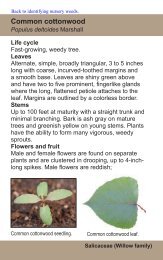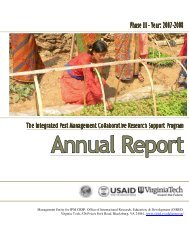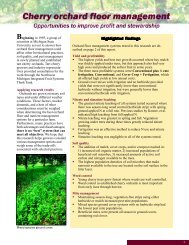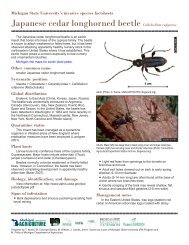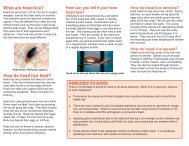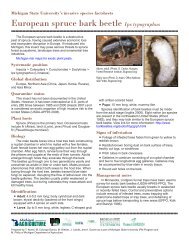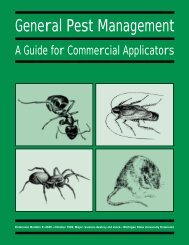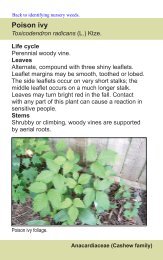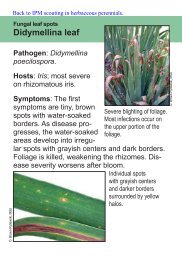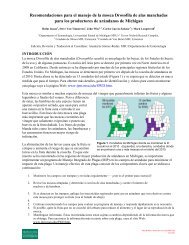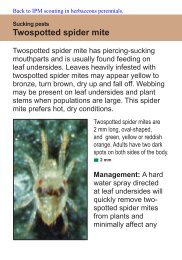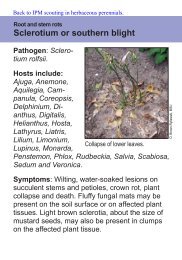CALIBRATION
CALIBRATION
CALIBRATION
You also want an ePaper? Increase the reach of your titles
YUMPU automatically turns print PDFs into web optimized ePapers that Google loves.
C<br />
4<br />
H<br />
A<br />
P<br />
TER<br />
Review Questions<br />
Chapter 4: Calibration<br />
6. Measuring and comparing the output of each nozzle<br />
to the average output of all the nozzles allows you to<br />
determine if:<br />
A. The pump is functioning properly.<br />
B. Any nozzle is worn or clogged.<br />
C. It is the right nozzle for the job.<br />
D. The pressure is accurate.<br />
Write the answers to the following questions and<br />
then check your answers with those in the back of<br />
the manual.<br />
1. Why is calibration of various spray systems essential?<br />
7. If the spray pattern is not uniform, you should:<br />
A. Check the boom height.<br />
B. Check the spacing and alignment of the nozzles on<br />
the boom.<br />
C. Check the operating pressure.<br />
D. Do all of the above.<br />
8. You determine the distance to travel for calibration by:<br />
A. Using a formula with a constant and the nozzle<br />
spacing.<br />
B. Reading it from the pesticide label.<br />
C. Reading it from the tractor handbook.<br />
2. Calibration ensures that the correct amount of pesticide<br />
is delivered uniformly over the target area.<br />
A. True<br />
B. False<br />
3. What happens to the flow rate if you increase the<br />
nozzle pressure or use a larger nozzle tip opening?<br />
A. Has no effect of the flow rate.<br />
B. Increases the flow rate.<br />
C. Decreases the flow rate.<br />
4. To double the flow rate, you must increase the<br />
pressure:<br />
A. Twofold.<br />
B. Threefold.<br />
C. Fourfold.<br />
D. Fivefold.<br />
5. If the throttle setting remains constant, and the speed<br />
doubles, the amount of spray per acre:<br />
A. Remains constant.<br />
B. Doubles<br />
C. Is reduced by half.<br />
D. Is reduced by one quarter.<br />
D. Setting an arbitrary distance based on the type of<br />
pesticide.<br />
9. Why is there an operating pressure range for each type<br />
of nozzle?<br />
A. To prevent nozzle clogging.<br />
B. To relieve strain on the pump.<br />
C. To keep the spray pattern from distorting.<br />
D. To calculate the travel distance.<br />
10. In a broadcast sprayer calibration, if the nozzle spacing<br />
is 30 inches, what is an appropriate distance to<br />
stake out in the field?<br />
A. 101 feet<br />
B. 136 feet<br />
C. 256 feet<br />
D. 1 acre<br />
11. In Question 10, it took 20 seconds to travel the appropriate<br />
distance. What does this travel time tell you?<br />
A. How long you should measure the output from<br />
nozzles.<br />
B. How long it will take to spray the entire field.<br />
C. How long it will take to empty the tank.<br />
D. Whether the sprayer is properly calibrated.<br />
Chapter 4<br />
30<br />
Field Crop Pest Management



